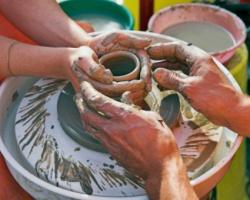I’ve never really considered myself a creative guy, at least not in a Martha Stewart type of way. I’ve always struggled making artsy things with my own two hands. I first encountered this struggle in elementary school while trying to make a clay killer whale for my mother. It was to be fired in the kiln and painted to perfection. Unfortunately, it looked more like a mangled hot dog. Since then, I have questioned whether I can create.
God, however, does not question our ability to create. God created us. He created us in His image, and God is creative.
So, as someone who has struggled with being artsy, how could I accomplish this command from Jesus in my youth ministry? What are practical ways to fulfill the great commission with the students for whom God has made me responsible?
My goal is to offer a three-step process to discipleship that can be implemented no matter what region of the country, size of the youth group or the church budget. Child psychologist Jean Piaget once said, “The principle goal of education is to create men [women] who are capable of doing new things, not simply of repeating what other generations have done—men [women] who are creative, inventive and discoverers.” I believe the future of the church is dependent on men and women who have had effective spiritual education and discipleship.
Step 1: Model
In order to make disciples, we must follow God’s example. When communicating to humans how to live holy lives, He sent a model in Jesus. As Christians or “little Christs,” the goal is to imitate our Savior. In turn then, we model for others what being a Christian looks like. As Paul says in 1 Corinthians, “follow me as I follow Christ.” We should ask ourselves if our lives are good models.
If you discover an area of sin in your life that does not align with Jesus’ standard, then repent. Confess and seek forgiveness. Then move on. Find accountability for your Christian character through accountability partners or commitments to holiness. In order to create disciples, we must first be disciples. In order to be a model, we must have a model. Great discipleship begins with a trustworthy example. Give your students an honest look into your life through your teaching, family, Facebook, leadership, etc. Submit to Jesus’ leadership so what they see is congruent with Jesus’ model. You will have begun the discipleship process by building credibility with your students.
Step 2: Mirror
There is nothing more honest than a mirror. It has told me many things that I wish weren’t true, but were. For example, I missed some spots shaving, or there was a zit in the middle of my forehead. Once trust is built, you become a mirror for your students. You become the way in which they can receive an honest assessment of where they are in relation to Christ.
During the course of discipleship, a student will ask questions and so will you. The answers to these questions will be the base for their self-assessment. Through Scripture and godly advice, your students will grow in their spiritual walks. James 1:23 says, “Those who listen to the Word but do not do what it says are like people who look at their faces in the mirror and after looking at themselves, go away and immediately forget what they look like.” Giving students the opportunity to evaluate their lives in the reflection of a godly mirror is crucial. What they do with that knowledge is their decision.
Mirroring can take place at McDonald’s, over a Coke, at a pond with fishing poles in hand or in the youth room with music blaring in the background. However it happens, this step is fundamental in developing a culture of discipleship and trust.
Step 3: Mentor
Credibility is gained through being a godly model. Trust is gained though being a mirror. When a relationship has credibility and trust, then you have earned the right to teach. The greatest mentors I have had in my life have done the hard work of modeling Christlikeness and mirroring to showing me who I really was. The old saying is true; people don’t care how much you know until they know how much you care.
As a mentor, you get the opportunity to help guide the student and correct the student. Mentoring can take many forms. From spoken words, memorable experiences or written letters, wisdom can be passed from mentor to student.
The truth is these three steps never finish. They work hand-in-hand and consecutively to create an environment of growth. You may not be the artsy type, but God can use you to help create disciples who follow Jesus.




